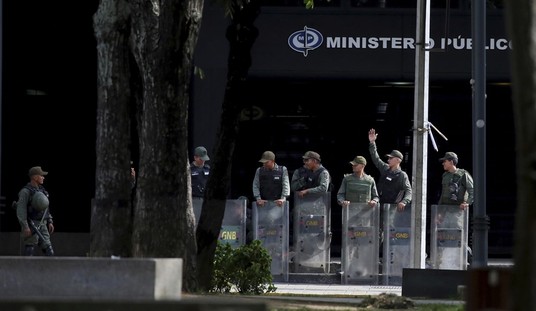Only 4 remain alive of the 80 pilots and airmen who took off from the deck of the USS Hornet on April 18, 1942 in what many consider the most daring military action of World War II. They were commanded by a hard-nosed Army Air Force veteran named James “Jimmy” Doolittle. What became known as Doolittle’s Raid successfully bombed Tokyo and two other Japanese cities at a time when the enemy considered itself invincible, it’s island defenses impregnable.
Tonight in Dayton, Ohio at the National Air Force Museum, 3 of the surviving members of that raid will gather for a final toast to comrades living and dead (a fourth survivor could not attend due to ill health). They will hoist silver goblets filled with cognac and recall the action that thrilled the American people, raising their seriously damaged morale following the devastating attack on Pearl Harbor and a string of Japanese victories in the months afterward.
Officials at the National Museum of the U.S. Air Force said more than 600 people, including Air Force leaders and Raiders widows and children, were expected for the invitation-only ceremony Saturday evening. Also expected were relatives of Chinese villagers who helped Raiders elude capture and two U.S. survivors of the Japanese attack on Pearl Harbor five months earlier.
After Thomas Griffin of Cincinnati died in February at age 96, the survivors decided they would gather this autumn for one last toast together instead of waiting as had been the original plan for the last two survivors to make the toast.
Raiders participating Saturday were Lt. Col. Richard “Dick” Cole, Doolittle’s co-pilot, 98, of Comfort, Texas; Lt. Col. Edward Saylor, 93, of Puyallup, Wash., and Sgt. David Thatcher, 92, of Missoula, Mont.
The fourth surviving Raider, Lt. Col. Robert Hite, 93, couldn’t come, but his son and other family members from Nashville, Tenn., planned to represent him. Son Wallace Hite said his father, wearing a Raiders blazer and other traditional garb for their reunions, made his own salute to the fallen with a silver goblet of wine at home earlier in the week.
Hite is the last survivor of eight Raiders who were captured by Japanese soldiers. Three were executed; another died in captivity.
The 80 silver goblets in the ceremony were presented to the Raiders in 1959 by the city of Tucson, Ariz. The Raiders’ names are engraved twice, the second upside-down. During the ceremony, white-gloved cadets pour cognac into the participants’ goblets. Those of the deceased are turned upside-down.
The cognac will be from 1896, Doolittle’s birth year.
The all-volunteer unit was not told the target, simply that the mission would be extremely hazardous. They would use land-based B-25 Mitchell bombers to take off from the deck of the Navy’s newest carrier, the USS Hornet, flying low over the water and after bombing Tokyo, continue on to land at friendly airfields in China.
The genesis for using B-25’s for the raid seemed inspired, according to the official Navy history:
The raid had its roots in a chance observation that it was possible to launch Army twin-engined bombers from an aircraft carrier, making feasible an early air attack on Japan. Appraised of the idea in January 1942, U.S. Fleet commander Admiral Ernest J. King and Air Forces leader General Henry H. Arnold greeted it with enthusiasm. Arnold assigned the technically-astute Doolittle to organize and lead a suitable air group. The modern, but relatively well-tested B-25B “Mitchell” medium bomber was selected as the delivery vehicle and tests showed that it could fly off a carrier with a useful bomb load and enough fuel to hit Japan and continue on to airfields in China.
They never made it to the Chinese air bases. Doolittle planned to launch his planes when 400 miles from Tokyo. But the fleet was spotted by Japanese fishing boats more than 600 miles from the target. Doolittle made the risky decision to launch immediately, even though he knew his boys wouldn’t have a prayer of reaching friendly air fields.
According to the oldest survivor of the raid, 98 year old Richard Cole, the hairiest moment came when he had to bail out of his plane in the middle of a thunderstorm:
The worst moment came hours later, when he had to parachute out of his B-25 bomber over China in the middle of a heavy storm.
“That was the scariest time,” said Richard Cole, now 98 years old.
“There you are in an airplane over a land you are not familiar with, under a big weather front, very active with lots of rain, with thunderstorms and lots of lightning and you are going to jump out,” he said.
“There are lots of questions that are going through your mind.”
The Doolittle Raid did more than cheer a nation’s morale. Stung by the bursting of their illusions of invincibility, the Japanese advanced the timetable for their attack on New Guinea. As their huge fleet steamed into the Coral Sea, they were met by 3 American carriers, alerted to their plans by the cracking of the Japanese naval code. The resulting battle — the first naval engagement in history where neither side saw each other — was considered a draw. But a few weeks later when Admiral Yamamoto attacked Midway Island hoping to draw the American carriers into a trap, the US Navy turned the tables on the Japanese — with a big assist to the code breakers — as almost 300 carrier-based aircraft obliterated four Japanese carriers. From then until the end of the war, the Japanese were largely on the defensive.
It is right to honor these men and marvel at their quiet heroism. And tonight, before you sit down in your easy chair to enjoy the game, hoist your own goblet to the 80 men who defied all the odds and almost singlehandedly altered the course of World War II.










Join the conversation as a VIP Member